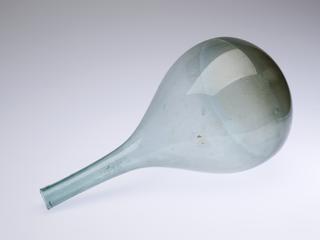
Du Bois-Reymond-type induction coil, London, England, 1920-1940

One of two du Bois-Reymond sledge coils, for physiological use, by C.F. Palmer London, 1920-1940
Named after their inventor Emil Du Bois-Reymond (1818-96), a German electro-physiologist, this type of induction coil was used in physiological experiments. Induction coils are used to produce a pulses of high-voltage current from a low-voltage direct-current source such as the one produced by the experiment set-up.
An isolated muscle is placed on coils of wire and connected to an electrical stimulus, controlled by a switch. The muscle is also attached to the kymograph to record when the muscle contracts. When the muscle is stimulated, heat is produced and transferred to the thermocouple (cut away to show the two coils of metal which, when heated, produce an electric current). The thermocouple is attached to a galvanometer to record the electric current produced when the thermocouple is heated.
Details
- Category:
- Laboratory Medicine
- Object Number:
- 1981-606/2
- Materials:
- mahogany (wood)
- type:
- induction coil




